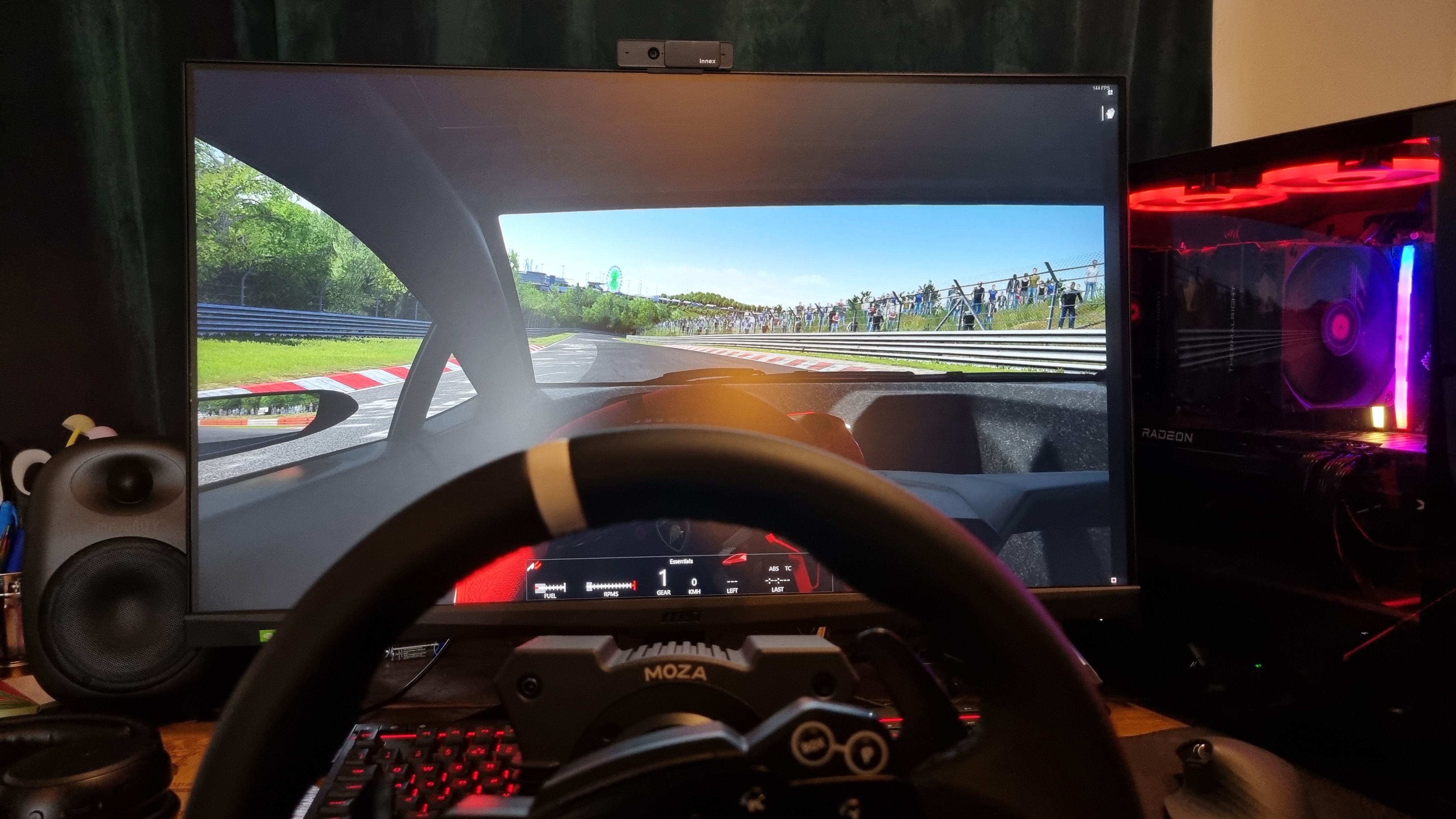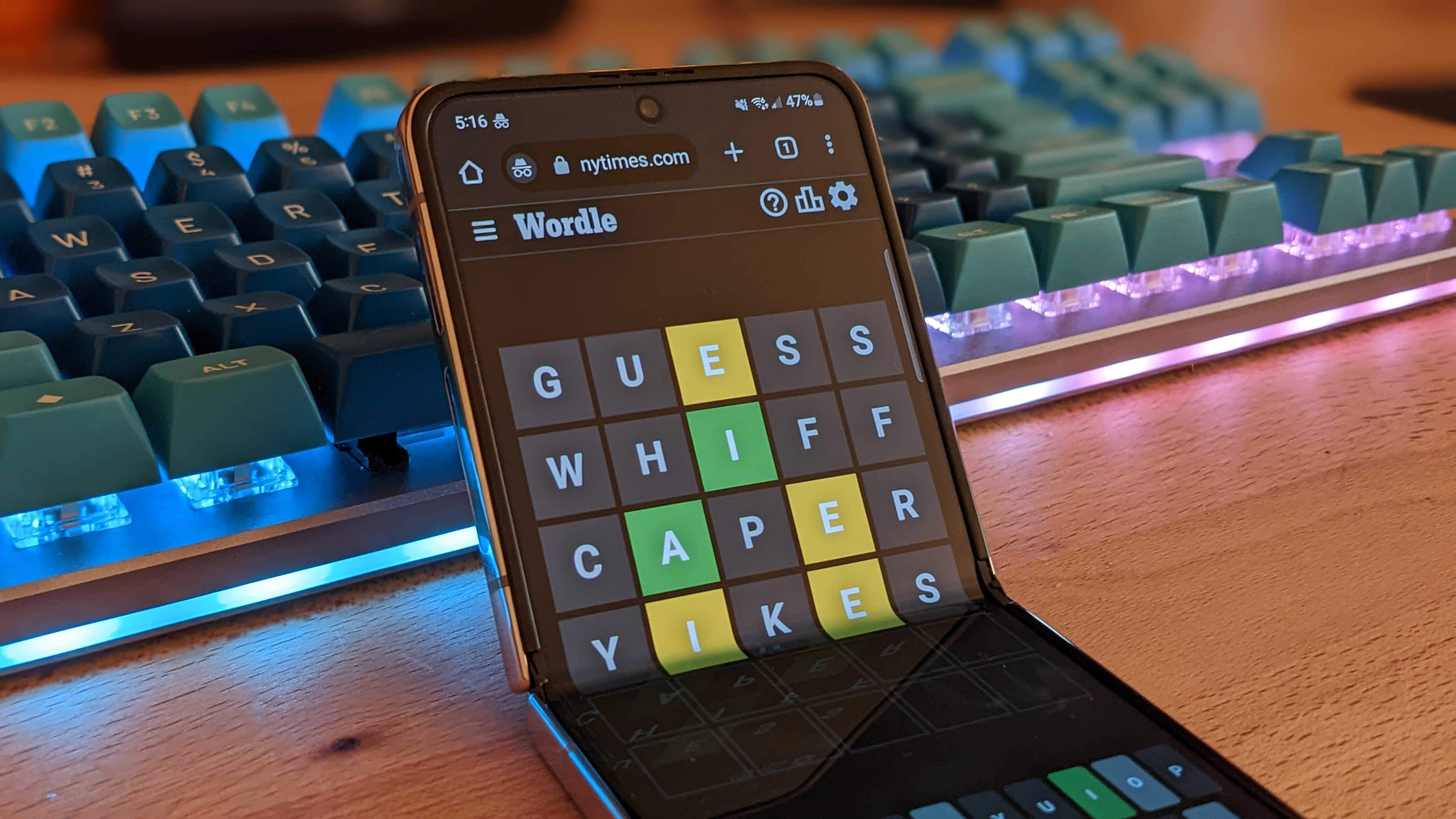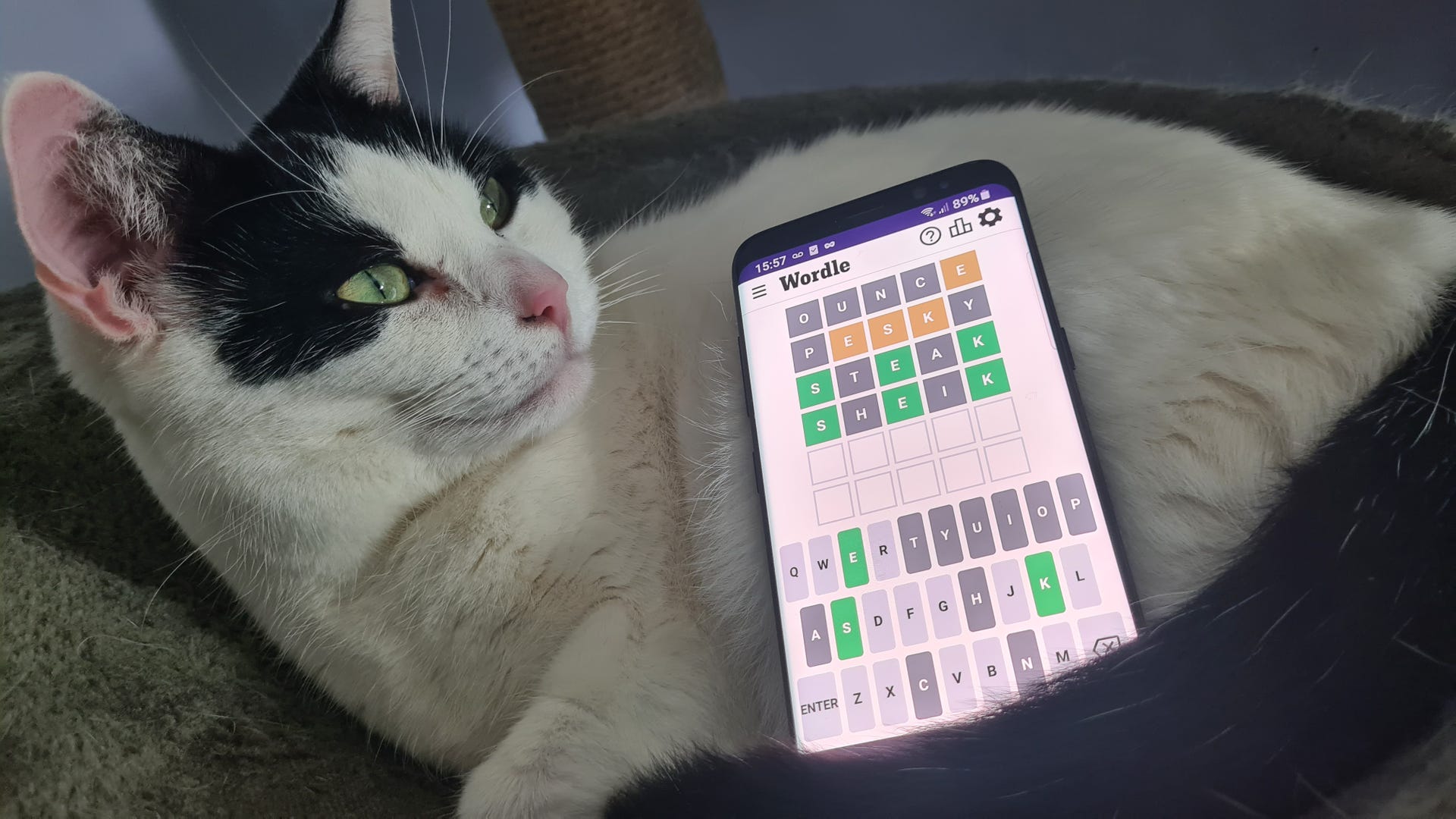
As gaming experiences go, I'm not sure I've experienced anything quite so calming as climbing behind the wheel of a virtual car.
(Image credit: Future)
This month I’ve been testing: the best PC speakers and best racing wheels. Both immersive aspects of gaming, and both at their best when they’re putting you right in the middle of the experience.
Car racing has always been of interest to me. Growing up in a family of motorsport enthusiasts, I’ve never been far from the smell of petrol, the squeal of rubber on tarmac, or the inevitable swearing that occurs when a favoured driver ends up spinning out in the dust, or plonking their car into the barrier.
However—and here’s my first painfully personal admission of this piece—for reasons I don’t particularly want to get into, I don’t currently have my licence. My wheels have been clamped, my journeys miserably reduced to teeth-grindingly slow public transport, pleading for lifts, or using my own two feet.
Sim racing, then, is an opportunity. A chance to get behind the wheel of cars I could never currently hope to drive, never mind own for myself, and to rag them at their absolute limits. I recently had the chance to review the Moza R5 bundle, a direct drive racing wheel and pedal set that aims to provide the most realistic feedback possible thanks to a powerful, detailed motor that transmits road feel, kerb rumble, and the handling characteristics of your virtual machine directly into your hands.
This being the case, and wheel firmly gripped, I jumped at the chance to get back in the driving seat, even if only a virtual one.
At first, I practised my skills. The Assetto Corsa version of the Nürburgring (a notoriously challenging circuit located in the hills of the German countryside) was the track I picked to shake off some of the rust from my reflexes. A little Lotus Elise was my steed, and in it I familiarised myself with the basics of driving very fast indeed: try and brake in a straight line, don’t overspeed into corners, get on the power at the peak of an apex. Let the car tell you what it wants. Listen to the machine.
Soon, I was up to pace, or at the very least, completing fast laps without embarrassing detours into the grass verges or barriers. Next came racing against AI opponents, and then, once I was confident in my abilities and my reaction times had sharpened, I took to the internet at large, with the sort of mixed results you expect when racing on public servers against opponents of various levels of ability.
(Image credit: 505 Games)
But I kept coming back to the Nürburgring, on my own. Not just because the circuit was challenging, or iconic, both of which are true. But there was something about the sheer pleasure of driving the track, feeling out the corners and trying out various different cars, each of them with different characteristics, different ways of responding, different sensations down your wrist.
This, to me, is where sim racing comes into its own. Unlike virtually every other form of interacting with your games, sim racing is about feel.
Here’s my second personal admission. I have sometimes, at points in my life, struggled with my mental health. Gradually, over my 36 years, I have learnt various techniques that helped keep me in a mentally good place, one of which is mindfulness. This is the conscious decision to attempt to quieten down your internal monologue, and to think appreciatively about the things around you. To stop and smell the roses, so to speak. To be present.
To my surprise, a great sim racing setup in combination with a good racing game was activating the very same sensation. It was enveloping my senses through the detail of the feedback, the modelling, the sheer encompassing nature of the simulation, and allowing me the space to think, and not think, at exactly the same time.
It’s about the pleasure of the doing of the thing. The joy of tangibly feeling like you’re somewhere else
By emulating the feeling of simply driving in a fast car, on an empty road, with nothing to do but listen to the noise of the engine, the tires, and tune in to the feedback your car is giving you through the vibrations and movements in the wheel, it was distracting my sometimes self-defeating brain in the best possible way.
I found myself sinking into sim racing before I went to bed in the evening, not because I was desperate to improve my lap times, but because I wanted to relax before I went to sleep. I wanted to go for a drive.
Our interaction with games hasn’t really changed a lot since the early days. It’s still buttons and thumbsticks, mouse clicks and keyboard clacks, all of which are very subjective. But with the possible exceptions of haptic feedback and the odd bit of controller rumble, what the game wants to tell you, the feedback it’s providing, is usually restricted to audio and visual information.
A good direct drive wheel, on the other hand, is entirely physical. It allows a digital object to reach out of the screen, grab your arm forcefully, and convey exactly what it’s doing. Beyond being immersive for immersion’s sake, when done correctly I found it to be an experience that, while describing it as “moving” might perhaps be too much, was at the very least compelling in a way I hadn’t quite experienced before.
Not all of my sim racing experiences have gone entirely to plan. (Image credit: Beam NG GmbH)
More than that, it made me think about why we play games in the first place. For some it’s the challenge, the desire to pit your reflexes and your wits against high-level opponents that can really give you a run for your money, and sim racing is brilliant at that. But for me, I primarily play to escape. To exist in virtual worlds, to experience something beyond the mundanity of day-to-day life.
By providing meaningful feedback, meaningful immersion, sim racing has scratched that escapist itch in a way I hadn’t experienced before.
It’s about the pleasure of the doing of the thing. The joy of tangibly feeling like you’re somewhere else, doing something that would be ludicrously difficult, expensive, or even illegal in real life. And thanks to developments in racing wheel technology, it’s not simply a case of simulating compelling worlds and objects to interact with. With a good setup, those objects and worlds interact with you.
I can honestly say that in hectic, sometimes stressful times, I’ve found sim racing to be a blessed relief. I’m still trying to improve my lap times, to increase my awareness of cars around me, to become a better sim racer. The competitive element is there if you want it, and sometimes I do. But no matter what form of sim racing I choose, every time I get up out of the seat I feel calmer, more centred somehow. It’s become like mindfulness, like meditation, and like a warm bath after a long day.
Sim racing is changing me a little. It’s an additional experience in my life I didn’t know I needed, and yet one that I’m grateful for every time I get behind the wheel.






